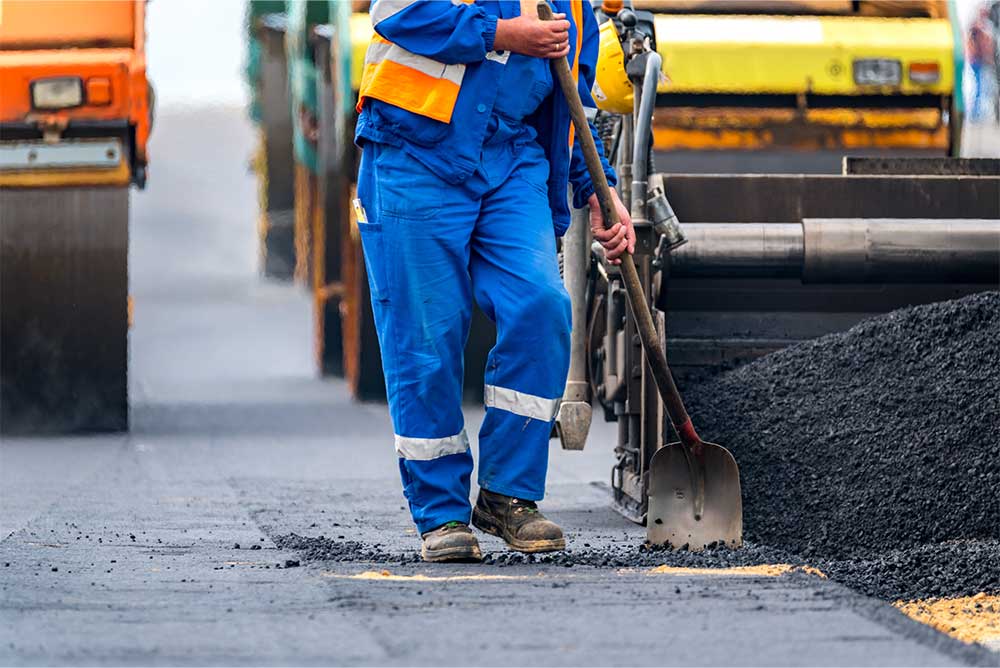COVID-19 has disrupted labor markets all across the globe. While millions of people were furloughed or laid off, many of their compatriots continued as essential workers. Public health measures to stop the disease’s spread were accompanied by private protocols instituted in nearly every workplace. Remote work became the norm in jobs that didn’t require in-person attendance. Yet these, plus other major developments, are affecting overall labor demand in the pavement industry,
Labor Shortages
Along with COVID-19 safety protocols, the Great Resignation is also affecting labor markets worldwide. Workers began quitting their jobs en masse, seeking improved benefits, flexible schedules, remote working opportunities and better pay. They also sought more opportunities to use their skills, with some workers switching career fields.
Such trends have contributed to worker shortages in almost every industry. However, certain industries saw the biggest impacts. In February 2022, The U.S. Bureau of Labor Statistics reported that several fields saw record numbers of workers quitting: Construction was among the top 10. Experts estimate that at least 2.2 million additional workers are needed to fill construction industry jobs.
Asphalt Industry Trends
The asphalt industry has experienced significant growth in demand over the last five years. According to IBISWorld, housing starts have increased more than 6% each year since 2016. Yet conflicting pavement trends may impact the industry’s future. projects a 3.9% revenue increase for 2021, fueled by new residential construction and housing projects. At the same time, nonresidential construction is expected to drop by 11%. Even so, IBISWorld also predicts revenue to increase annually by 2% until 2026.
Technology Trends
Technology trends may also impact job availability and shortages in the industry. Remote work is no longer limited to administrative and office positions. Innovations like augmented reality, drones and cloud-based collaboration apps allow some functions to go offsite.
Organizations may reexamine jobs in their organization, determining what tasks can be done remotely.
The last two years have also brought a shift towards greater reliance on e-commerce, digital transactions and virtual technologies. This has triggered growth in delivery, warehouse and logistics jobs, but it’s also supported certain aspects of remote work. Businesses and consumers are able to more quickly obtain tools to boost productivity and convenience.
Pavement Industry Innovations
Several pavement-specific technologies are transforming asphalt manufacturing and installation. Localized production includes recycling damaged asphalt and repurposing unused pavement. Logically, this impacts supply chain operations for companies relying on asphalt for construction projects. Predictive maintenance extends pavement lifespans, but it also allows scheduled ordering of needed materials. Other innovations improve speed, efficiency and quality:
- Compaction measurement
- Telematics
- Realtime infrared temperature sensing
- Thermal mapping
- Machine-to-machine communication
Trend Awareness and Strategic Planning
Many uncertainties exist when it comes to future labor demand for pavement industry workers. Although it’s not completely apparent how building, technology and economic trends will affect the industry, organizations should not expect massive declines in either available jobs or the workers who seek them. However, awareness of these developments can aid in strategic planning.
Pavement Network connects industry professionals and organizations to solid expertise, equipment and purchasing power. With these resources and supports, member businesses have additional tools to help themselves and each other succeed. To apply to join the Pavement Network, simply download and complete our prospective candidate application.
